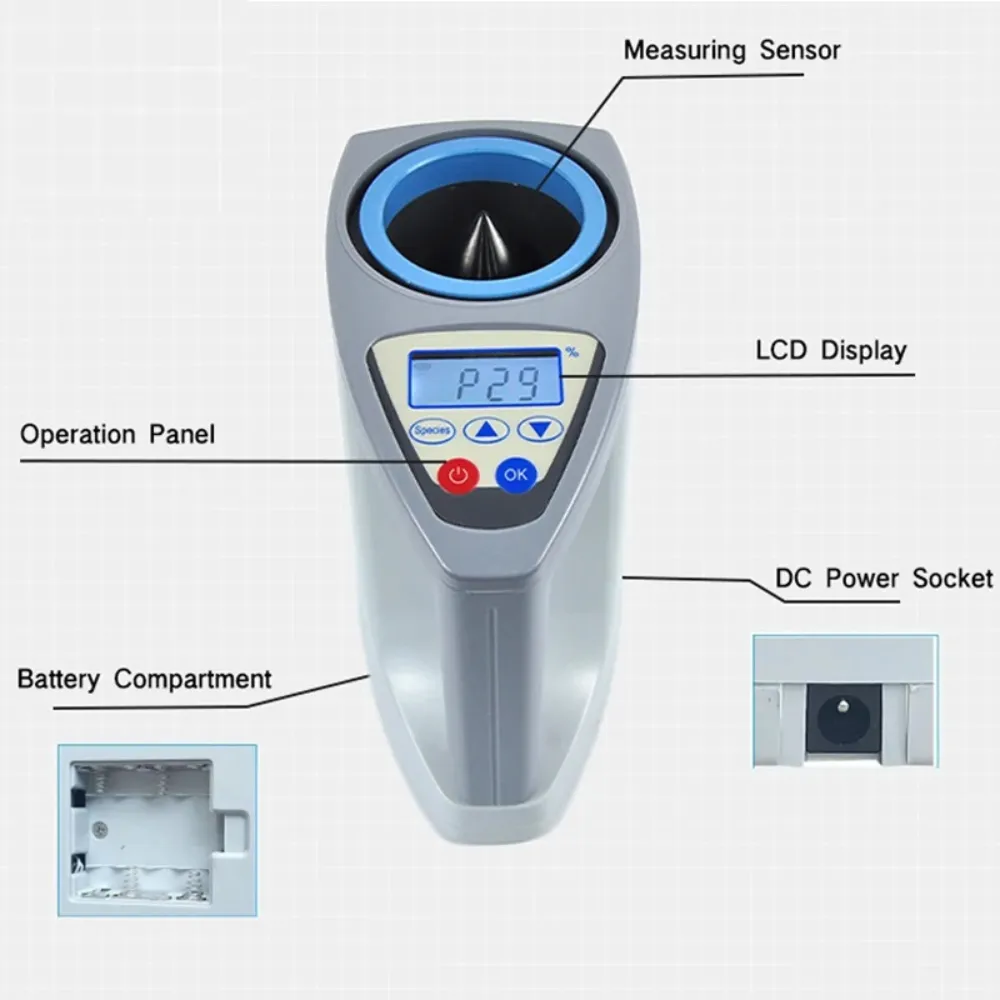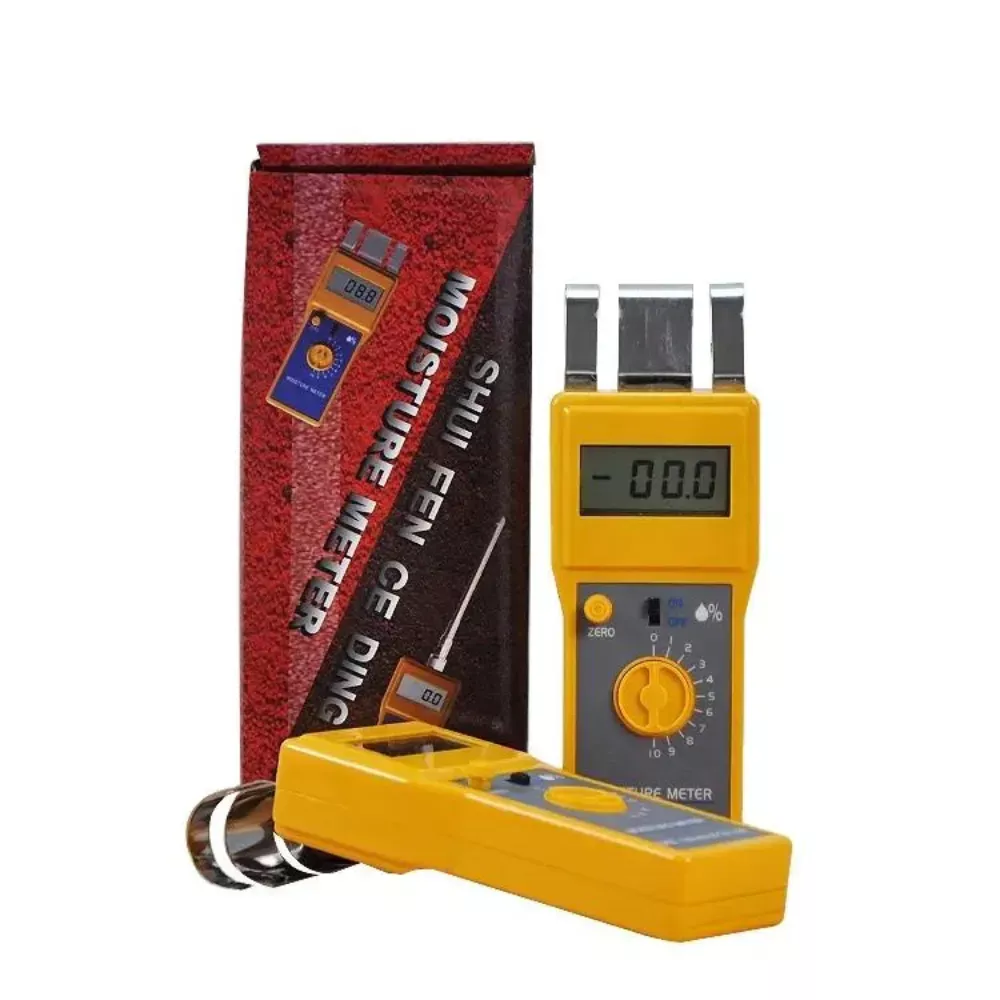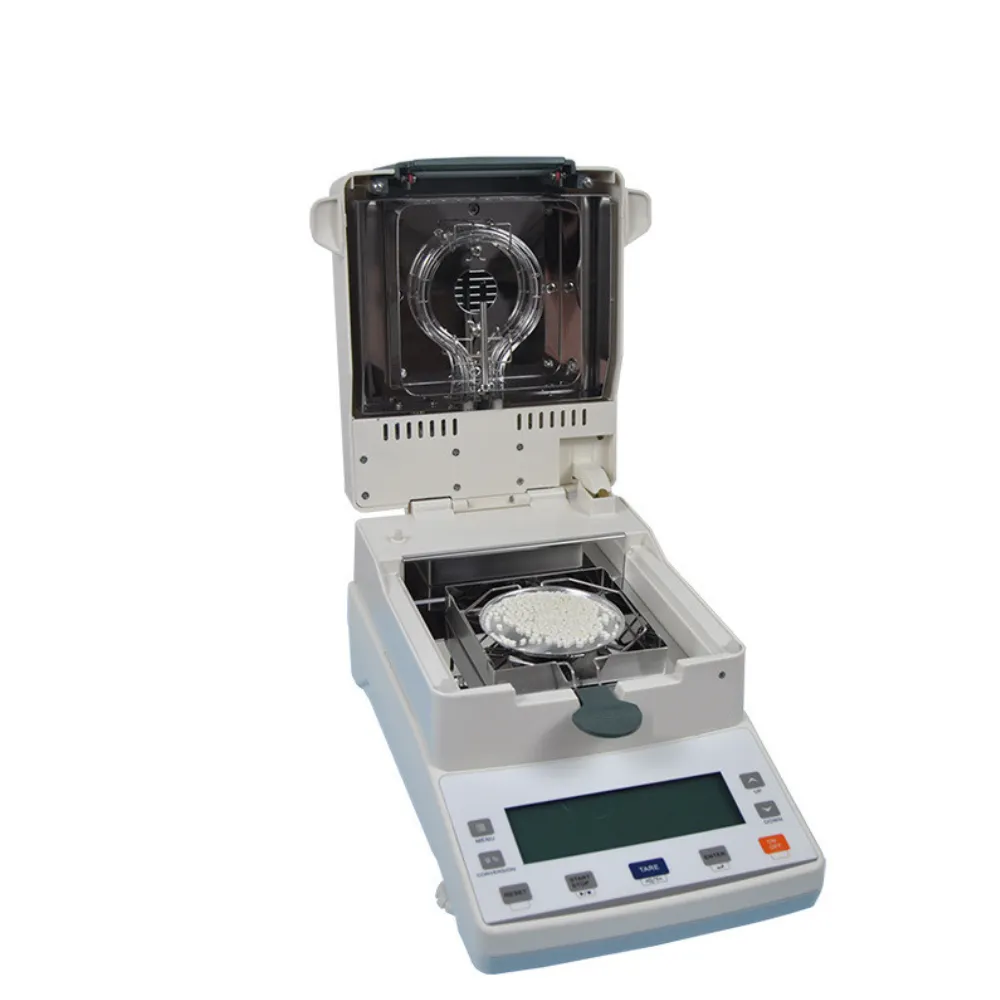
How to Choose the Right Custom Grain Moisture Meter for Your Needs
Table of Contents
When choosing a custom grain moisture meter, it’s crucial to understand the two main types available:
- Non-destructive moisture meters: These measure moisture content without damaging the grain.
- Destructive moisture meters: These require a small grain sample for analysis.
Your choice depends on your specific requirements and the type of grain you’re handling.
The accuracy of your grain moisture meter is paramount for ensuring correct moisture content measurements. Consider the following:
- Look for high accuracy ratings
- Choose meters calibrated to industry standards
- Prioritize durability and ease of use
A reliable and user-friendly moisture meter will save time and effort in the long run.
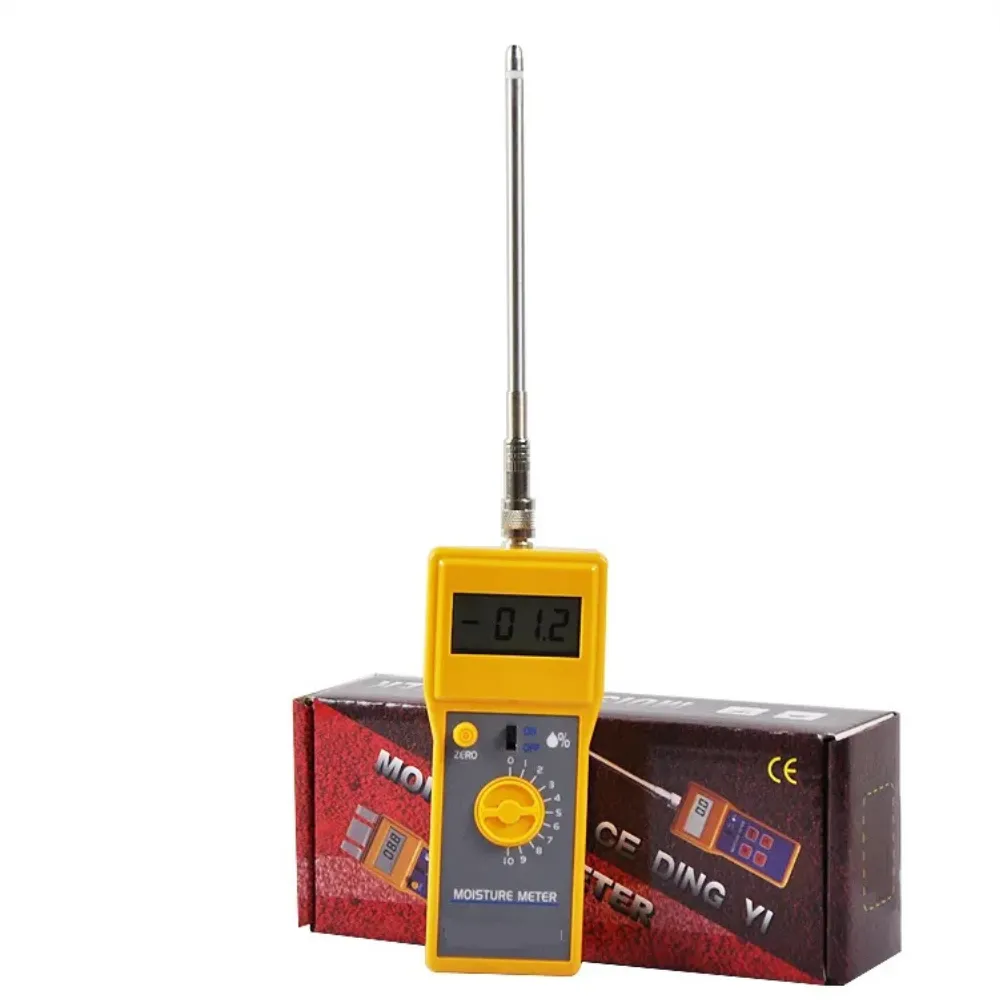
Different grains require varying moisture levels for optimal storage and transportation. When selecting a custom grain moisture meter, consider:
- The meter’s ability to measure a wide range of moisture levels
- Compatibility with various grain types
- Flexibility to accommodate your diverse grain handling needs
Additional Features to Enhance Functionality
Modern custom grain moisture meters often come with additional features that can improve their functionality and ease of use:
- Built-in temperature sensors for more accurate readings
- Large, easy-to-read displays
- Long battery life
- Sturdy construction for field use
- Data logging and connectivity options
Consider which features are most important for your specific operations.
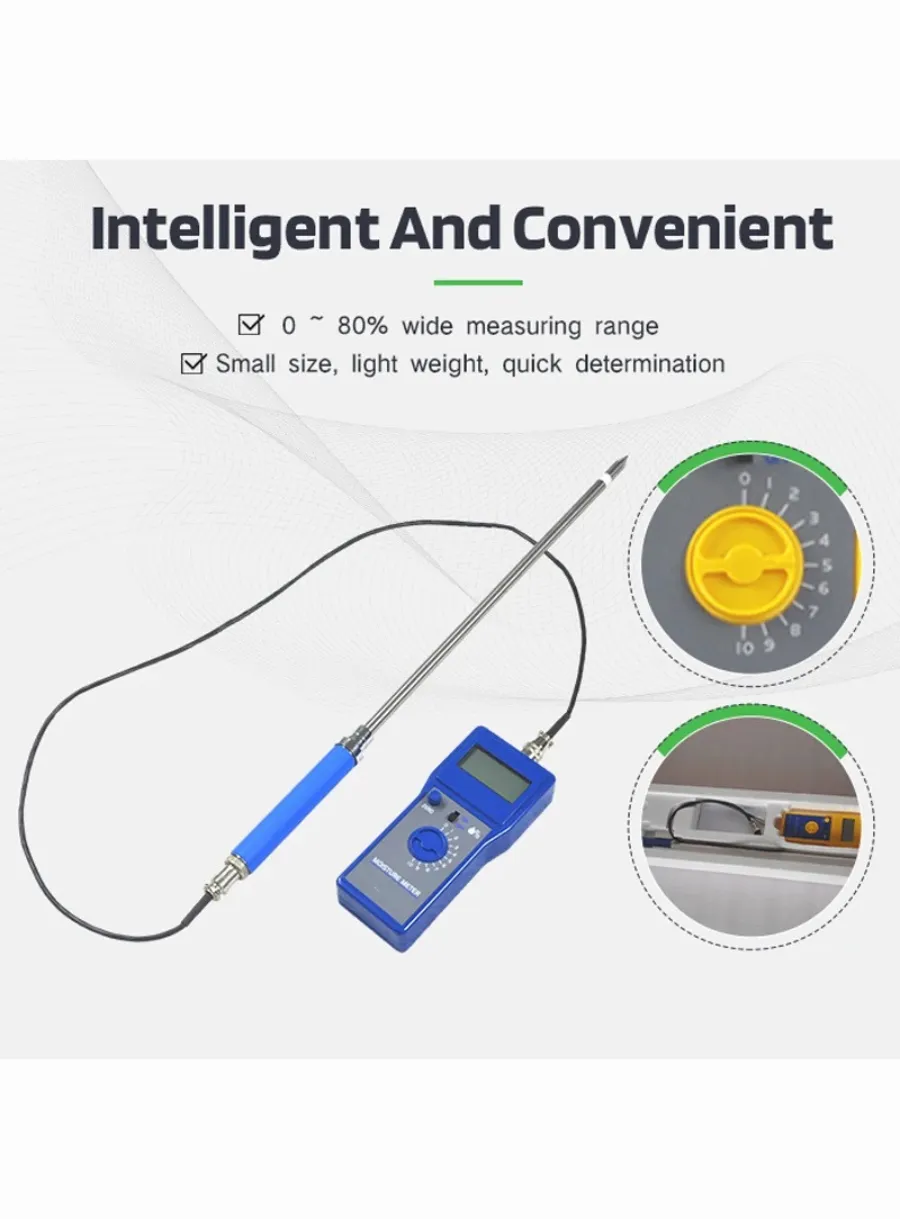
Balancing Cost and Quality
While investing in a high-quality moisture meter is important, it’s crucial to consider your budget. When evaluating costs:
- Compare features and accuracy across different price points
- Consider long-term value and potential return on investment
- Look for warranties or after-sales support
Compatibility with Your Grain Types
Ensure the custom grain moisture meter you choose is compatible with the types of grain you handle:
- Check if the meter has pre-set calibrations for your grain types
- Consider meters with options for custom calibrations
- Verify the meter’s accuracy across different grain varieties
Portability and Field Use
If you need to take measurements in various locations, consider the meter’s portability:
- Look for compact, lightweight designs
- Check battery life for extended field use
- Consider rugged construction for durability in various conditions
Conclusion: Making an Informed Decision
Choosing the right custom grain moisture meter requires careful consideration of various factors, including type, accuracy, range, features, and cost. By thoroughly researching and comparing different options, you can select a moisture meter that best fits your specific needs and enhances your grain management practices.
Comments
Tags
Frequently Asked Question
Many modern custom grain moisture meters can measure multiple grain types. However, ensure the meter you choose has calibrations or settings for all the grain types you handle.
Consider factors such as the types of grains you handle, storage conditions, required accuracy, budget, ease of use, and additional features like data logging or connectivity.
Many countries have regulations or standards for grain moisture meter accuracy, especially for trade purposes. Check your local agricultural regulations for specific requirements.
Temperature and humidity can significantly impact readings. Look for meters with built-in temperature compensation and follow proper testing procedures to minimize environmental effects.

